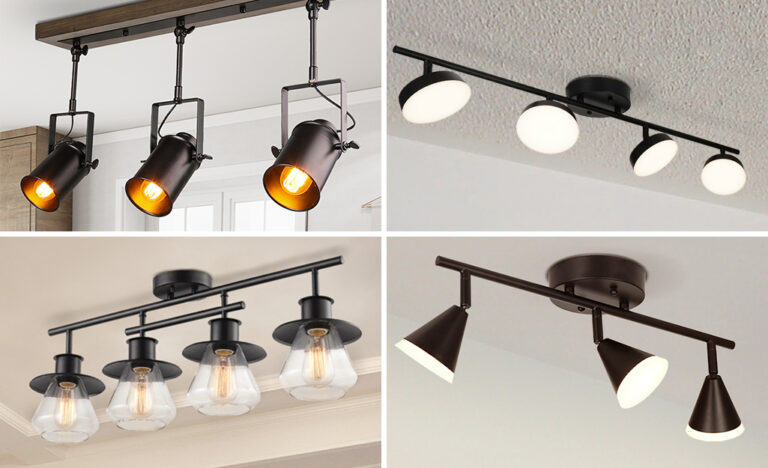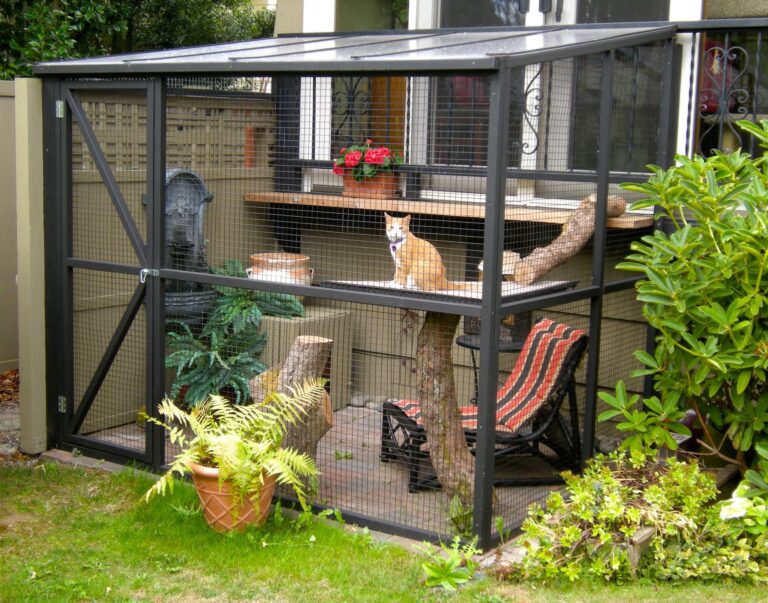How Do You Organize A Rock Garden?
A rock garden is an attractive, low-maintenance landscape addition that can add texture and natural beauty to your outdoor space. To create a beautiful and successful rock garden, proper planning and organization is key. You’ll need to decide on the size and shape of the garden, choose the right plants and rocks, and determine the best layout for the space. With some careful planning and preparation, you can create a stunning rock garden that will add a unique touch to your outdoor space.
Rock Gardens
Rock gardens are becoming increasingly popular, and for good reason. Not only are they aesthetically pleasing, but they also provide many environmental benefits. Rock gardens are low-maintenance, easy to install, and help conserve water. In addition, they can help reduce soil erosion, increase oxygen levels, and improve drainage. Furthermore, rock gardens are a great way to attract wildlife to your garden such as butterflies, hummingbirds, and bees. Installing a rock garden can be a great way to create a unique and inviting outdoor living space. It can also be a great way to add texture and color to your garden. With a little bit of creativity and planning, you can create a beautiful rock garden that will be the envy of your neighborhood.
Planning and Designing a Rock Garden
Rock gardens are a great way to add unique character and texture to your outdoor space. The right design can create a tranquil environment and provide an aesthetically pleasing landscape. However, before you start building your rock garden, it’s important to plan and design it properly. Here are some tips to help you create the perfect rock garden.
First, decide where you want to create your rock garden. You’ll need a space that receives at least six hours of sun a day and is in a well-drained area. If you have an area that meets these criteria, you can begin the planning process.
Next, select the right rocks for your rock garden. Rocks should be chosen based on their size, color, and shape. Larger rocks can be used as focal points, while smaller rocks can be used to fill in gaps.
Once you’ve chosen the rocks you want to use, create a plan for the garden. Think about how the rocks will be placed in the garden and what plants you’ll use to fill in the gaps. Make sure to take into account the size and shape of the rocks when designing the garden.
Finally, it’s time to start building the rock garden. Begin by arranging the rocks in the desired pattern. Then, fill in the gaps with soil and plants. Finally, add mulch to help keep the soil moist and to keep the weeds at bay.
Organizing a rock garden is not a difficult task, but it does require careful planning and design. By following these tips, you can create a beautiful and tranquil outdoor space that will bring years of enjoyment.
Selecting Rocks and Other Materials
Rock gardens are often used to create a visual focal point in a backyard or garden. They can also be used to create a relaxing atmosphere. To make sure that your rock garden looks great, it is important to select and organize the rocks and other materials properly.
When selecting rocks, try to find ones that are similar in size, shape, and texture. You may also want to select rocks that are native to your area. If you are working with a large rock garden, try to find rocks that come in different sizes and shapes. This will give your rock garden a more interesting look.
In addition to rocks, you may want to incorporate other materials into your rock garden, such as pebbles, gravel, and mulch. Pebbles and gravel can be used to fill in gaps between the rocks, while mulch can be used to provide a more finished look. When choosing these materials, make sure to select colors that complement the rocks in your garden.
Organizing the rocks in your rock garden is the key to creating a stunning visual effect. Try to group the rocks in a way that creates a balanced and aesthetically pleasing look. If you are working with a large rock garden, you may want to consider dividing the rocks into different sections. This will help to create a sense of order and make it easier to maintain the rock garden.
By carefully selecting and organizing the rocks and other materials in your rock garden, you can create a beautiful and tranquil space that will be enjoyed for years to come.
Soil Preparation for a Rock Garden
Creating a rock garden is a great way to spruce up a landscape and give your outdoor space a unique look. Before you start planting, however, it’s important to make sure you have the right soil for your rock garden. Soil preparation is key to the success of your garden.
When it comes to soil preparation for a rock garden, the most important thing to remember is drainage. Rocks can easily become waterlogged if not properly prepared. The best way to ensure proper drainage is to create a raised bed with a mix of soil and organic matter. This will help keep the soil light and allow excess water to drain away.
It’s also important to use a well-aerated soil. This allows for air circulation and helps to prevent waterlogging. A combination of sand, peat moss, and compost is ideal for creating a rock garden. The compost will help provide nutrients for the plants, while the sand and peat moss will help with drainage.
Finally, it’s important to ensure your soil is properly fertilized. Compost and fertilizers will help provide the proper nutrition for your plants. However, be sure to use organic fertilizers as chemical fertilizers can damage the soil and plants.
By taking the time to properly prepare your soil for a rock garden, you can ensure your garden thrives and looks beautiful for years to come. Soil preparation is the key to success when it comes to creating a rock garden.
:max_bytes(150000):strip_icc()/how-to-build-rock-gardens-2132674-hero-0ca8dc4580c9495c8fea6ed3db29f92f.jpg)
Planting and Arranging Rocks in a Rock Garden
Rock gardens are an attractive and stylish way to add a unique touch to any outdoor space. While they may look intimidating to create, they don’t have to be. With some planning, organization, and the right materials, you can have a rock garden that is sure to wow any visitors.
The first step in creating a rock garden is to determine the size and shape of the garden. Depending on the space available, you can choose from a variety of shapes, such as a circle, square, or rectangle. Once you have determined the shape, you can begin to plan the placement of your rocks.
When choosing rocks for your garden, you should select ones that are of similar size and shape. This will help to create a balanced look. You can also add some larger rocks for contrast. Additionally, it is important to choose rocks that have interesting shapes or textures to make your garden more visually appealing.
Once your rocks have been selected, you can begin to arrange them. Grouping the rocks according to size and shape can help create a sense of unity. Additionally, you can use the rocks to create pathways, walls, or other features for your garden.
Finally, you can choose plants to accompany your rocks. Choose plants that will thrive in the environment you have created. You may also want to add some mulch or gravel to complete the look of your rock garden. With careful planning and arrangement of your rocks, you can create a beautiful and unique rock garden that will be the envy of your neighbors.
Maintenance and Care of a Rock Garden
A rock garden is a delightful way to bring the beauty of nature to your backyard. But, simply having a rock garden isn’t enough. To keep your landscape looking its best, you’ll need to provide regular maintenance and care. Fortunately, it’s not difficult to do, and with a little effort, you can keep your rock garden looking fresh and inviting for years to come.
Maintenance of a rock garden should include regular weeding and removal of debris. Weeds can quickly take over a rock garden, so it’s important to stay on top of them. Additionally, it’s important to check the area for any debris that may have been carried in from the wind and other sources. This debris should be removed as soon as possible to avoid damage to plants.
Caring for a rock garden also includes providing necessary nutrients and keeping plants healthy. Most rock gardens will benefit from a light layer of fertilizer every few months, especially during the growing season. To keep plants healthy, it’s important to monitor them for any signs of disease or pests. If there are any signs of disease or pests, it’s important to take action immediately to prevent further damage.
Finally, it’s important to keep an eye on the overall shape and design of the rock garden. You may need to trim plants periodically to keep the garden looking tidy. Additionally, you may need to rearrange the rocks and other elements to maintain the desired design.
By taking the time to provide regular maintenance and care, you can ensure that your rock garden remains an attractive addition to your landscape for years to come.
Creating Special Features in Your Rock Garden
Adding special features to your rock garden can be a great way to make it stand out from the rest. Whether you’re looking to incorporate water features, sculptures, or other decorative items, there are plenty of ways to add a little extra something to your garden.
Water features such as ponds or cascading waterfalls can be a great way to bring life and tranquility to your rock garden. Not only do they offer a calming sound and visual aesthetic, but they also provide a great way to attract wildlife. Additionally, incorporating sculptures or other art pieces can give your garden a unique touch. Just make sure to research the type of materials that are best suited for outdoor art pieces to ensure they’ll last in the elements.
Organizing your rock garden in a way that makes sense and enhances its beauty is key. Consider the placement of your plants, rocks, and special features to create a visually appealing and functional outdoor space. Utilize different types of rocks to create a natural-looking contrast, and consider adding paths or seating areas to create a sense of flow.
Organizing a rock garden can be a great way to bring life and beauty to your outdoor space. Incorporating water features, sculptures, and other special features can be a great way to make your garden stand out. With careful consideration of the placement of your plants, rocks, and features, you can create an outdoor space that you’ll be proud to show off.
Troubleshooting Common Issues with Rock Gardens
Rock gardens are a great way to add an attractive, low-maintenance feature to your backyard. However, creating a successful rock garden isn’t always a straightforward task. To ensure that your rock garden looks its best and lives up to its full potential, it’s important to troubleshoot any issues that arise.
One common issue with rock gardens is drainage. If your rock garden is soggy and waterlogged, likely, that your soil is not draining correctly. To solve this issue, you need to create a sloping landscape and add gravel or other drainage material beneath the soil. This will allow the water to run away from the garden.
Another common issue is weeds. If you don’t want your rock garden to become overgrown, you need to take steps to prevent weeds from taking over. Mulch is a great way to help suppress weeds and keep them from invading your rock garden.
Finally, it’s important to choose the right plants for your rock garden. Plants that are native to your region will be much more successful than plants that are not. Choose plants that are drought-resistant and low-maintenance, so that you’ll be able to enjoy your rock garden without having to constantly worry about maintenance.
By troubleshooting these common issues, you can ensure that your rock garden is a beautiful and successful feature in your backyard. With the right maintenance and care, your rock garden will become a beautiful and lasting addition to your landscape.
FAQs About the How Do You Organize A Rock Garden?
1. What type of rocks should I use in my rock garden?
Answer: Rocks that are high in alkalinity like limestone, dolomite, or sandstone are ideal for rock gardens. Avoid using rocks with sharp edges as these can be hazardous.
2. What kind of plants should I use in my rock garden?
Answer: Plants that thrive in well-drained, dry soils such as sedums, asters, and yarrows are great choices for rock gardens. Succulents and drought-tolerant perennials such as lavender and rosemary are also recommended.
3. How should I arrange the rocks and plants in my rock garden?
Answer: Consider creating a natural-looking landscape by using large rocks as focal points and then arranging smaller rocks and plants around them. You can also create pathways and steps with the rocks, and use different levels of rock and plants to create an interesting 3D effect.
Conclusion
Rock gardens are a great way to add beauty and texture to any outdoor space. They can be as simple or as complex as you like, and with the right planning and organization, you can have a beautiful rock garden that will last for years to come! The key to success is to plan and focus on the elements that will make the rock garden look its best. Select the rocks you want to use, assess the area where you will be placing the garden, and make sure to consider the needs of the plants that you will be growing. With proper preparation, you can create a rock garden that will be an attractive addition to your outdoor space.





